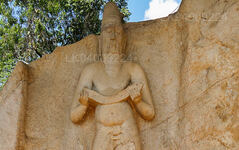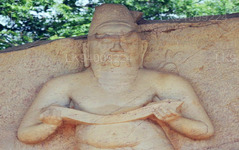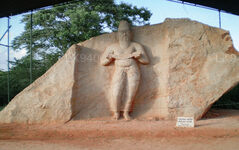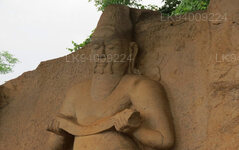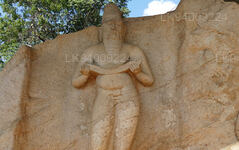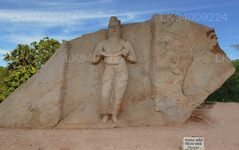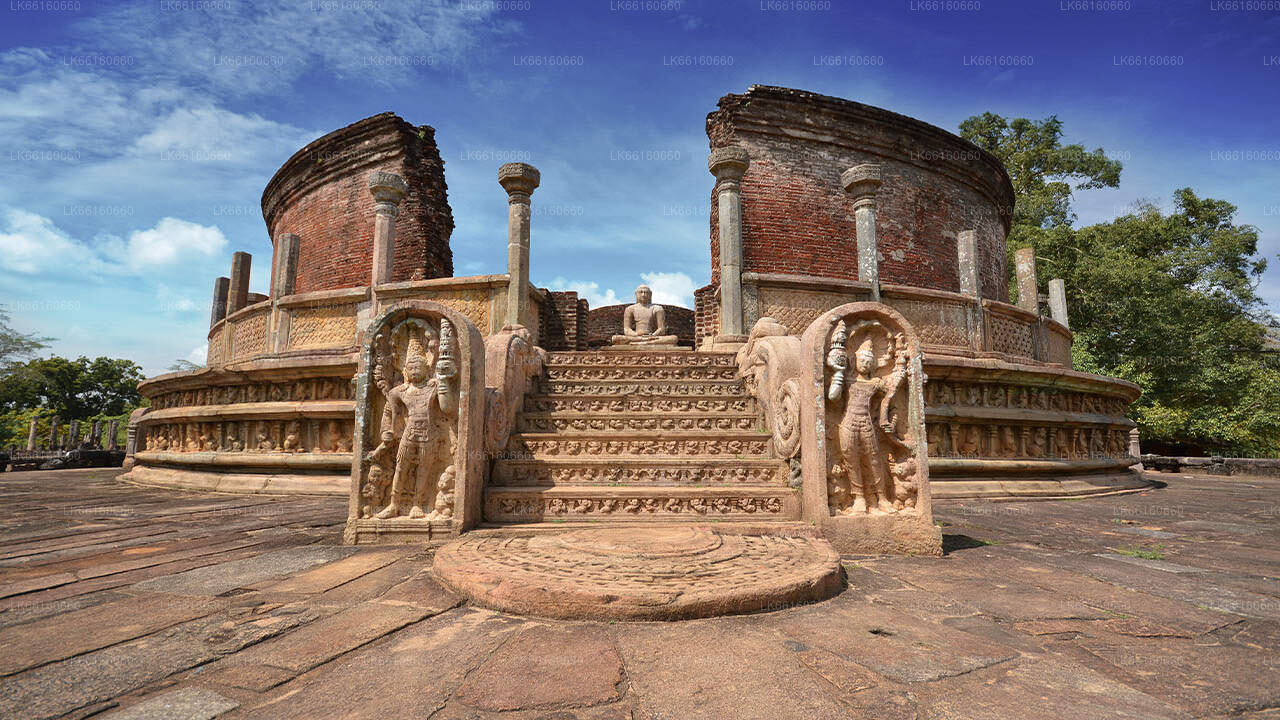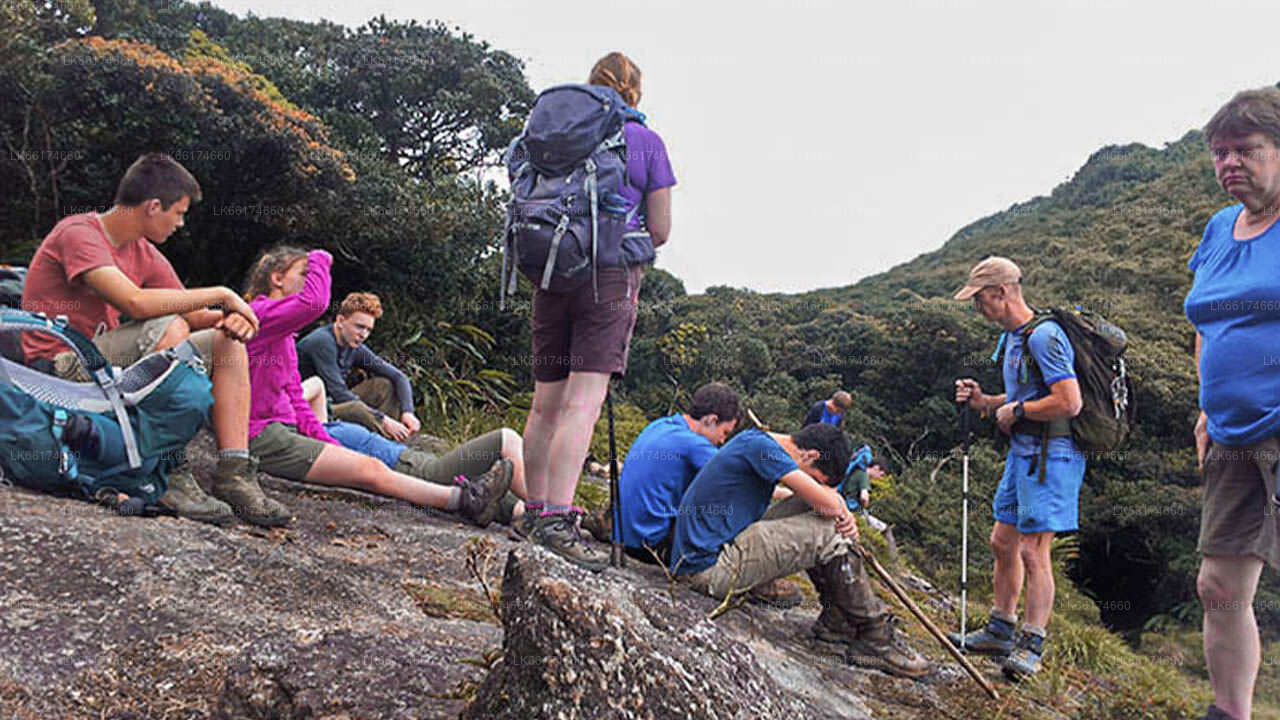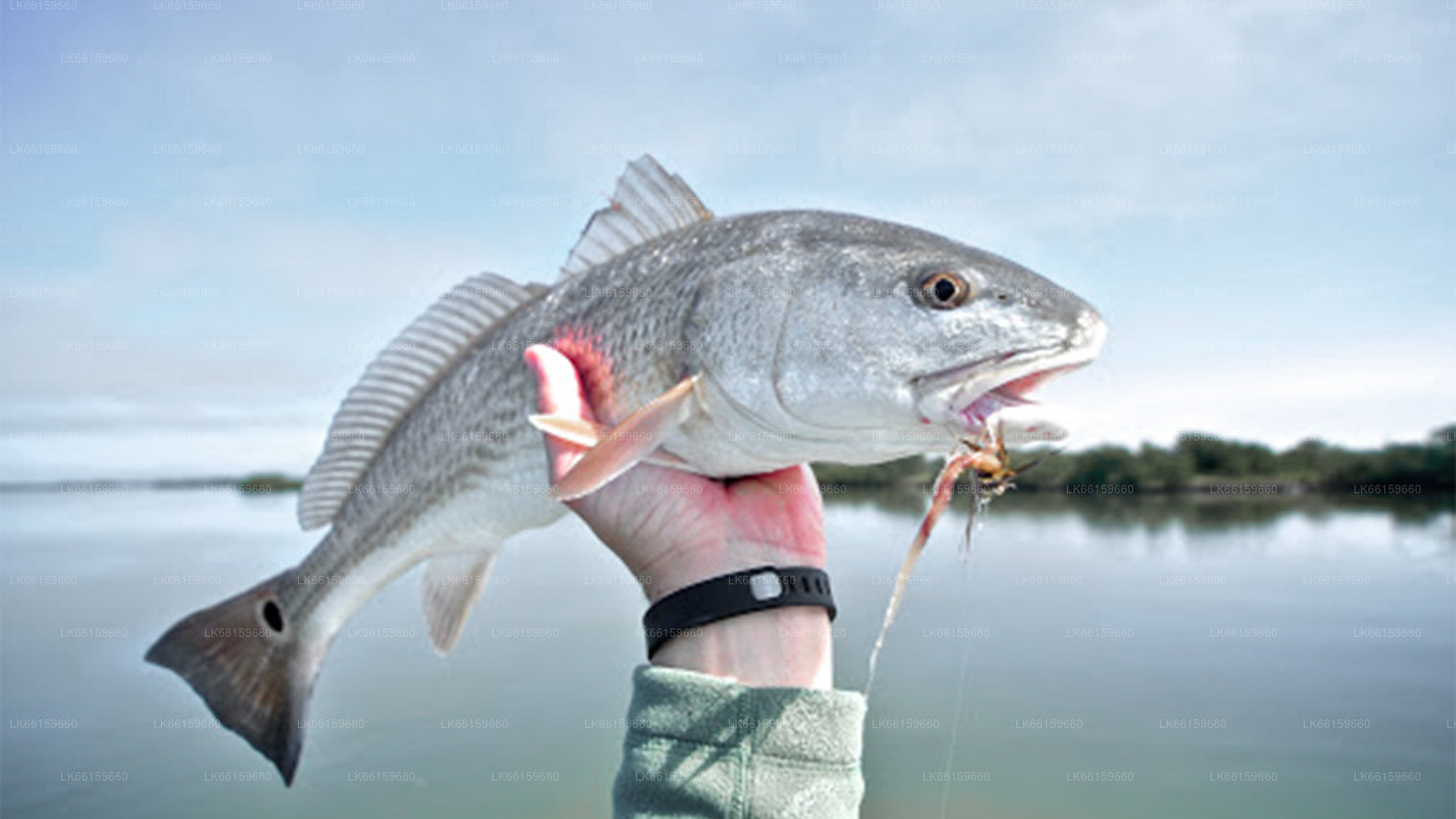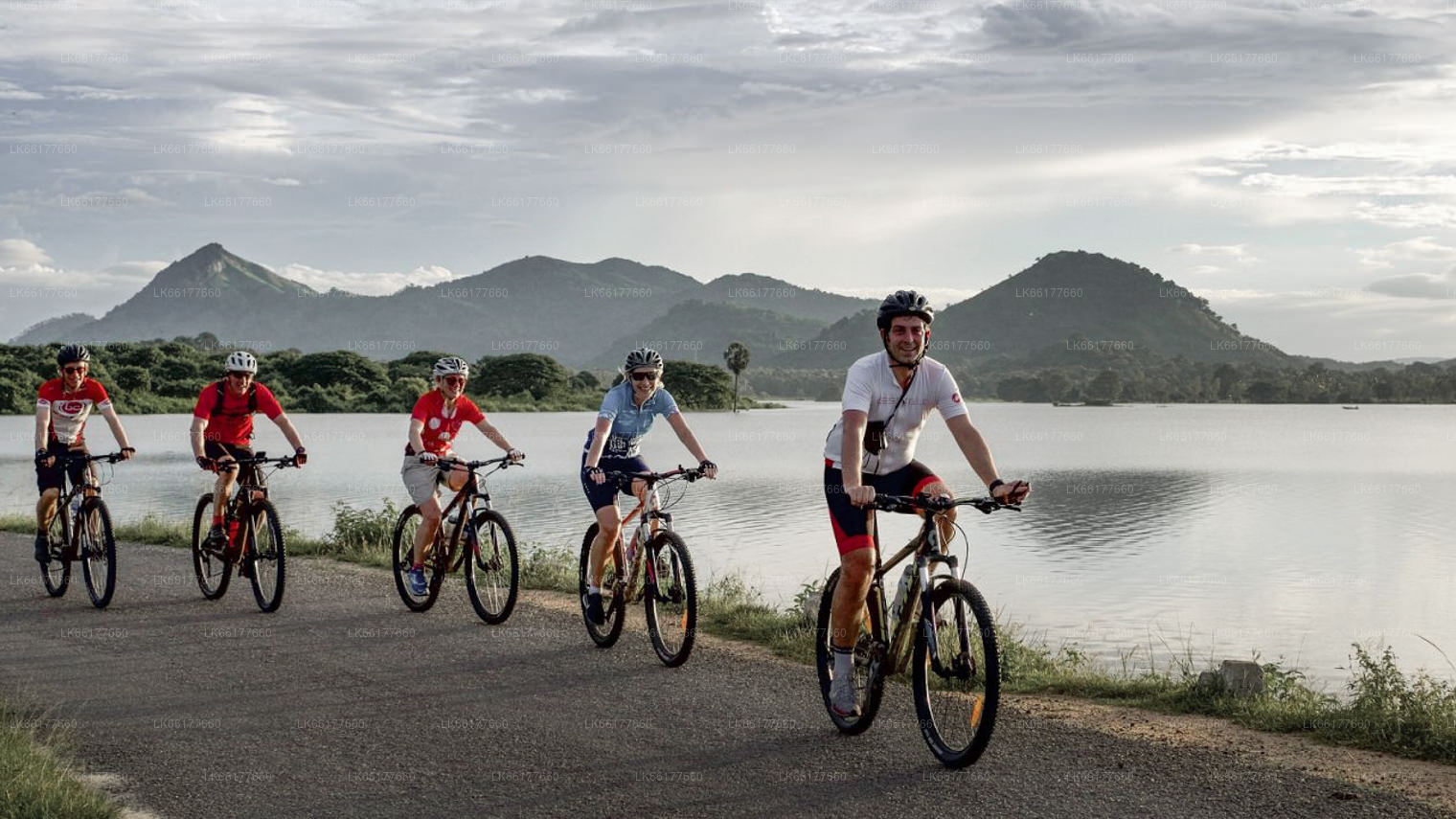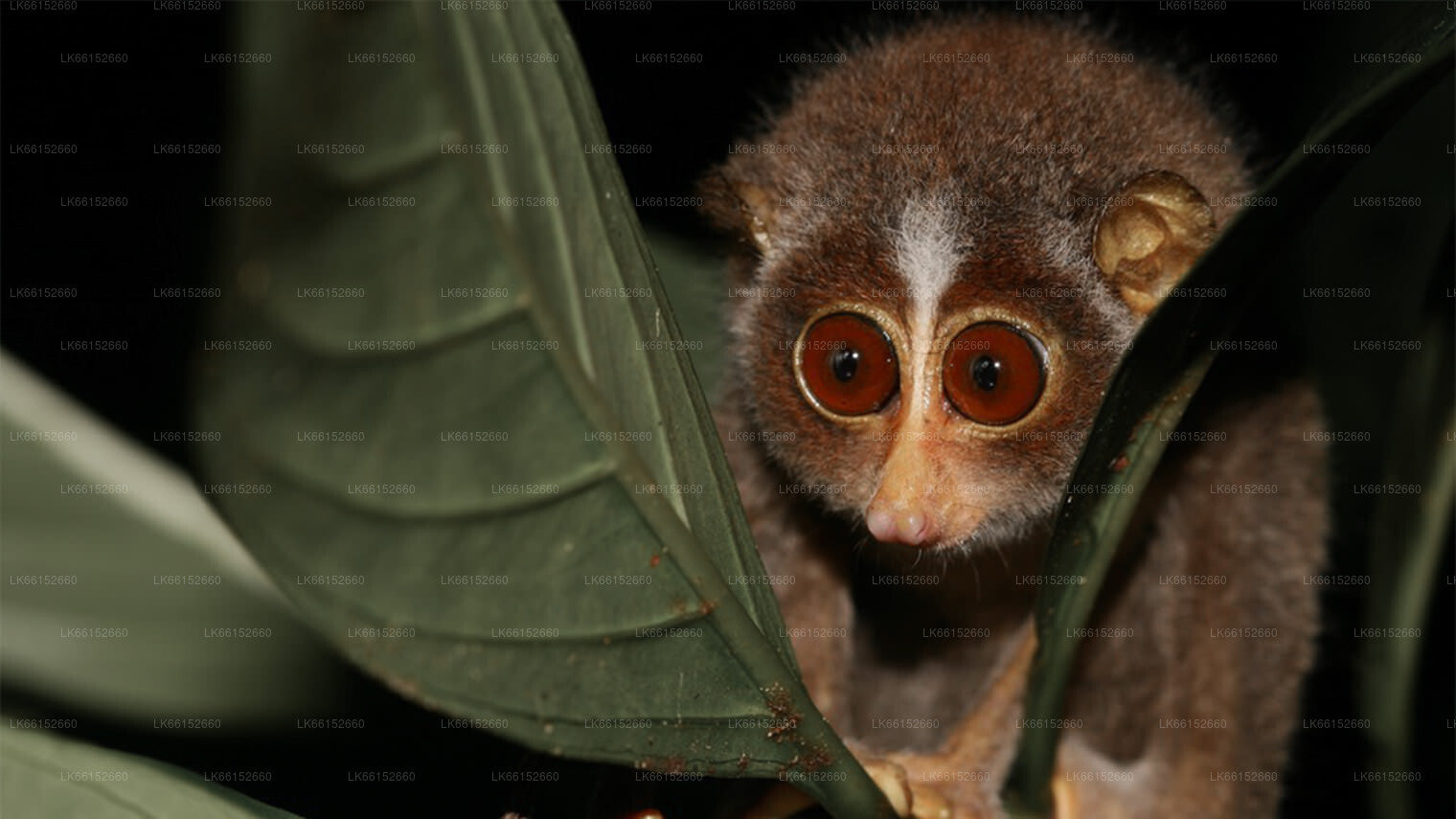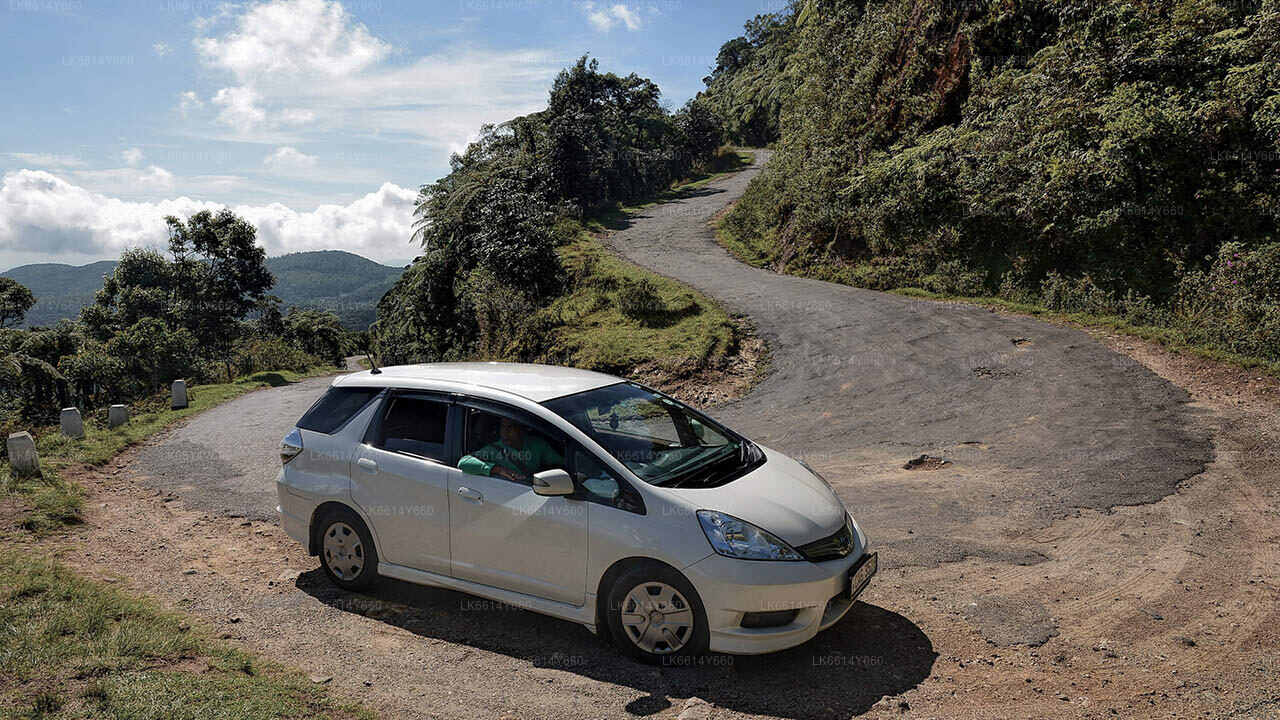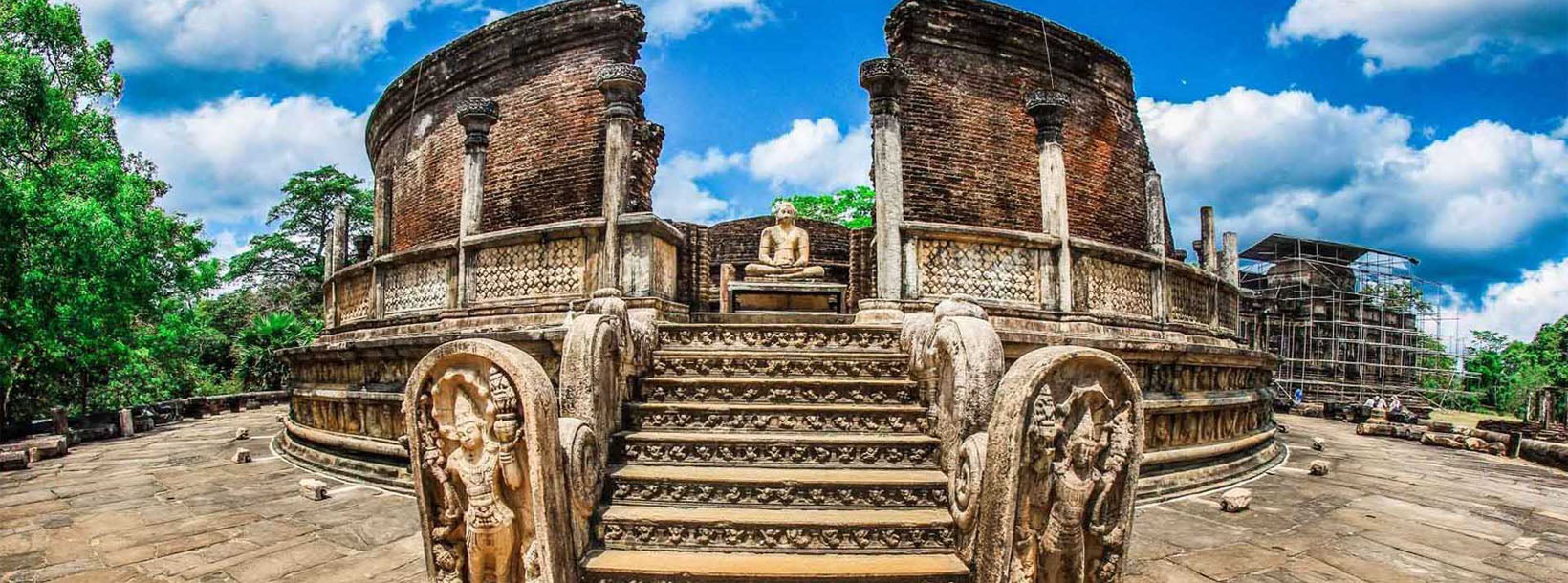
Città di Polonnaruwa
Polonnaruwa, patrimonio mondiale dell'UNESCO in Sri Lanka, fu la capitale medievale del paese (XI-XIII secolo). Rinomata per le sue rovine ben conservate, tra cui le iconiche statue del Gal Vihara, vanta un'architettura imponente, che riflette la grandiosità dell'antica civiltà singalese.
Pulasthi Statue
The statue is located to the north of the city of Polonnaruwa, and close to the eastern bank of the Parakrama Samudra reservoir, which was built by Parakramabahu I himself. It is about 100 metres (330 ft) north of the ancient Potgul Vehera monastery
LocationThe statue is located to the north of the city of Polonnaruwa, and close to the eastern bank of the Parakrama Samudra reservoir, which was built by Parakramabahu I himself. It is about 100 metres (330 ft) north of the ancient Potgul Vehera monastery.
CharacteristicsThe statue was built presumably in the 12th century, during the reign of Parakramabahu I. The statue of Parakramabahu I is one of the best stone sculptures belonging to the Polonnaruwa period. The 11-foot-2-inch-high (3.40 m) statue is carved in high relief on a large boulder, with full use being made of its height. Its upper body is bare except for a single thread worn over the left shoulder.A long object is held in the hands. The statue's face carries a grave expression, with half-closed eyes, a high forehead, a long beard and a moustache. The shoulders of the statue are rounded, suggesting "extraordinary strength". The right leg is relaxed with the right knee bent forward slightly. The left leg carries the weight of the body, while the hip is also slightly inclined to the left. According to archaeologist Senarath Paranavitana, this statue is "the very embodiment of strength, majesty and dignity"
IdentityThe statue has not been positively identified, but the popular and widely accepted belief is that the statue is of King Parakramabahu I, who ruled the country 1153 to 1186. Historian Mendis Rohanadeera has suggested that the statue shows a man belonging to the Lambakanna clan, because a hare—a symbol of this clan—is depicted above the left shoulder of the statue. This supports the theory that it is a statue of Parakramabahu I, who was of the Lambakanna clan. However, another theory is that it is the statue of a sage; either Agastya or Pulasthi. The object held in the hands of the statue may be an ola (cured palm leaves) book. This, and the fact that it is located close to the Potgul Vehera, which was a library in ancient times, supports this theory. However, another belief is that the object is a "yoke of kingship".
Informazioni sul distretto di Polonnaruwa
Polonnaruwa è la seconda città più grande della provincia centro-settentrionale dello Sri Lanka. L'antica città di Polonnaruwa è stata dichiarata Patrimonio dell'Umanità dall'UNESCO. Polonnaruwa ha una grande storia di conquiste e lotte alle spalle e costituisce a pieno titolo il terzo elemento del Triangolo Culturale. Situata a circa 140 km a nord-est di Kandy, Polonnaruwa offre ore di piacere infinito per gli amanti della storia e della cultura, grazie ai suoi numerosi luoghi di interesse.
Gran parte delle rovine fisiche che si possono ammirare oggi sono attribuite al re Parakrama Bahu I, che spese molte risorse reali nella pianificazione urbana, inclusi parchi, edifici, sistemi di irrigazione e così via. Il periodo del suo regno è considerato un'età dell'oro, in cui il regno prosperò e prosperò sotto la guida di un sovrano visionario. Il Parakrama Samudra è un gigantesco carro armato e prende il nome dal suo patrono. Il famoso Palazzo Reale del re, la Sala delle Udienze circondata da elefanti di pietra splendidamente scolpiti e la Piscina per il Bagno riflettono le superiori capacità ingegneristiche dell'epoca
Informazioni sulla provincia centro-settentrionale
La Provincia Centro-Settentrionale, la più grande del Paese, copre il 16% della superficie totale del Paese. È composta da due distretti, Polonnaruwa e Anuradhapure. Anuradhapura è il distretto più grande dello Sri Lanka. La sua superficie è di 7.128 km².
La Provincia Centro-Settentrionale offre numerose opportunità per gli investitori che desiderano avviare un'attività imprenditoriale, in particolare nei settori dell'agricoltura, dell'industria agroalimentare e dell'allevamento. Oltre il 65% della popolazione della Provincia Centro-Settentrionale dipende dall'agricoltura di base e dall'industria agroalimentare. La Provincia Centro-Settentrionale è anche chiamata "Wew Bendi Rajje" perché nella provincia si trovano oltre 3.000 cisterne di medie e grandi dimensioni. Sri Maha Bodiya, Ruwanweli Seya, Thuparama Dageba, il Monastero di Abayagiri, Polonnaruwa Rankot Wehera e Lankathilake sono tra i più temuti.

